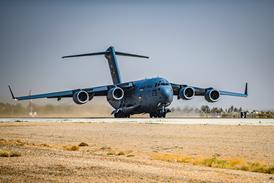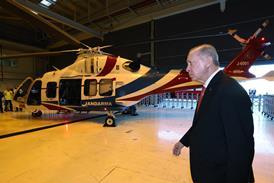SCE&G, a US-based energy utility company with a fairly new corporate flight department operating corporate services under Part 91, recently presented its own experience of setting up and operating a safety management system and operating according to industry best practice.
This was done through a presentation at last year's Flight Safety Foundation Corporate Aviation Safety Seminar, which illustrated the synergies between all sectors of the company - including the flight department - because it operates in an industry with a high exposure to risk.
SCE&G's flight department head Spike Boyer says: "Today, perhaps more than ever, corporate aviation is under the magnifying glass of customers, stockholders, fellow employees and board members." His point is that every aspect of the flight department's operation will be subject to scrutiny, and it should be able to justify, in detail, why it operates the way it does.
Boyer says the company's fledgling flight department began to organise itself in 2004-05 by creating a flight operations manual based on the IS-BAO (International Standards for Business Aircraft Operation) generic FOM. In 2006 it carried out an operational risk management assessment, and in 2007 the safety management expertise from different Scana Group corporate sectors was brought together in a safety leadership council that included managers in charge of general facilities, the nuclear energy department and the flight department. The benefit was the clarification of total corporate top-down commitment to safety management in all areas, and a determination to win employee buy-in.
Boyer's general advice runs like this:
- "Know that nothing happens quickly in a large corporation and you simply can't impose the SMS on everyone, because if it is to succeed, they must do it for themselves.
- "The good news is that time is on your side and what may appear to be 'baby steps' to us can be huge mental shifts in how others inside our companies view safety.
- "Continue to stress best practices and seek them in your company (not just the flight department)."
The National Business Aircraft Association itself has drawn up a "prototypical" business aviation safety manual that harmonises with the principles Boyer sets out, and emphasises that an SMS without a company safety culture is an empty vessel. The NBAA's description of the characteristics of a working culture on which to base an SMS includes these principles:
- Unqualified commitment by top management to safety as a behavioural pattern and way of life.
- Unambiguous expectations by each level of management and peer group that, for all employees, safe life patterns and work habits are normal practice, both on and off duty.
- There are clear, easily understood operating procedures that people follow.
- There is a trusted system for collecting, analysing, exchanging and communicating safety incident data.
- Retribution does not follow reporting of safety incident data, but retraining without penalty or stigma may follow if appropriate.
- There is a system for tracking incident and accident data, the analysis of trends, followed by corrective action and monitoring the results of that action.
Source: Flight International























